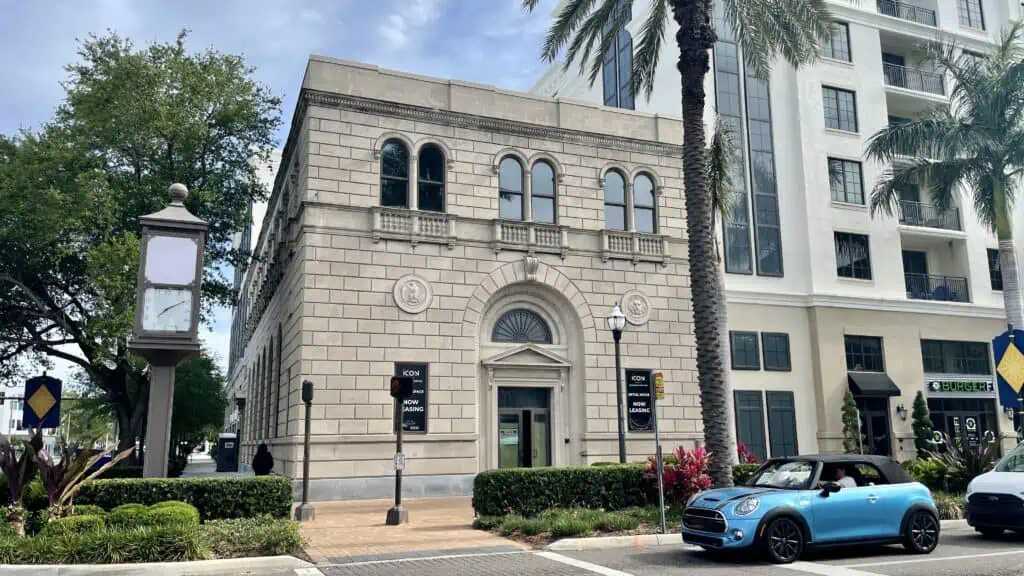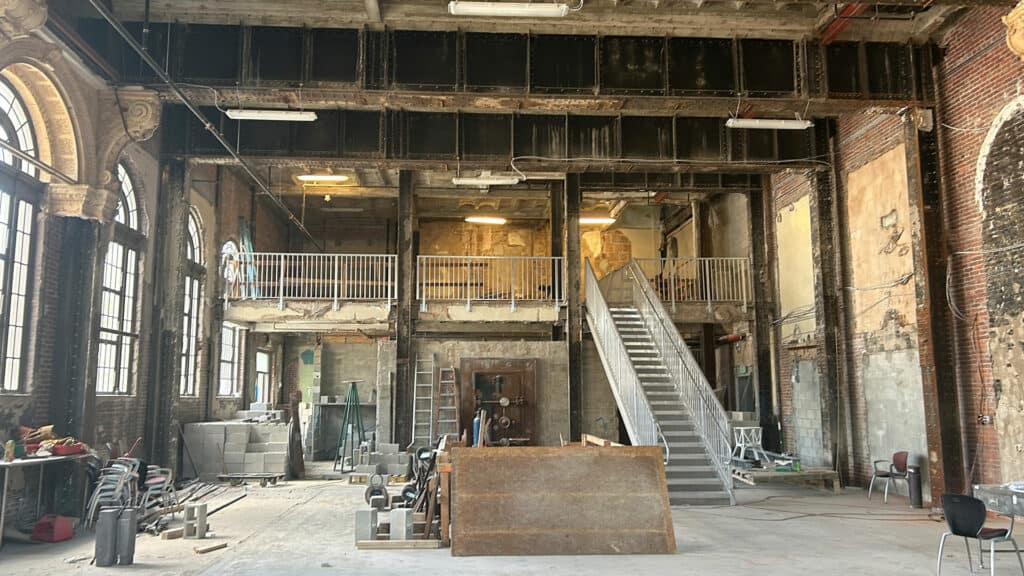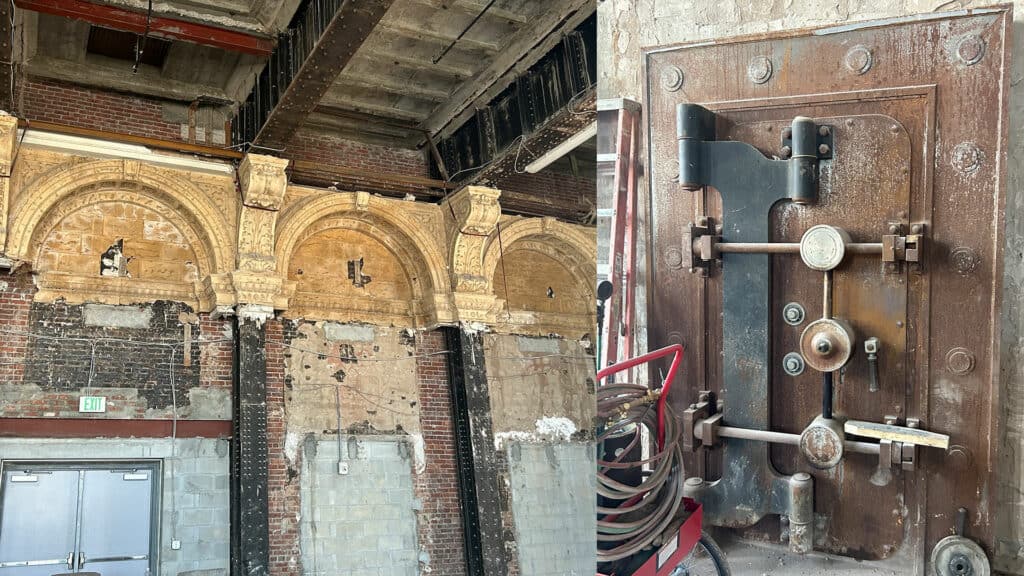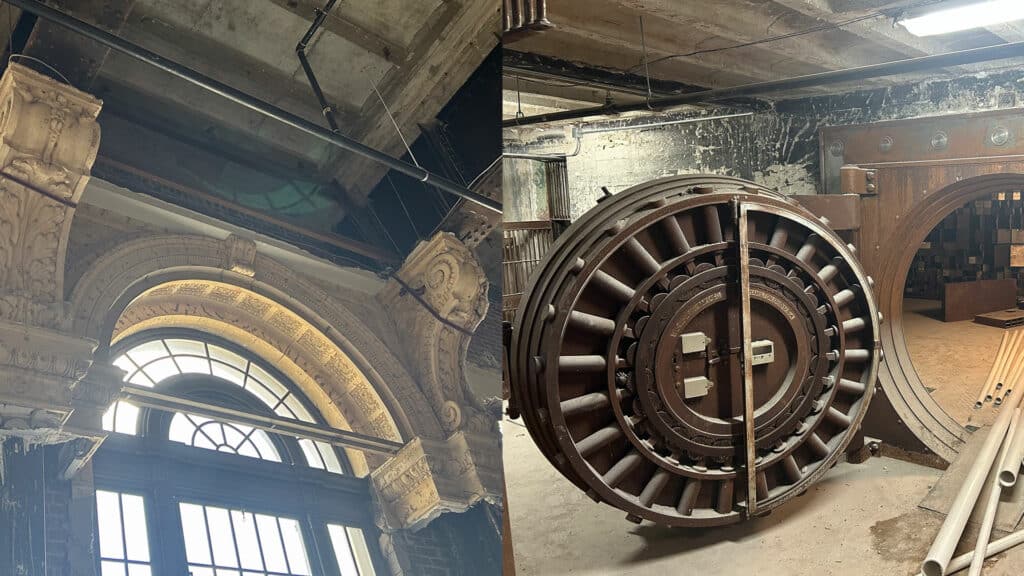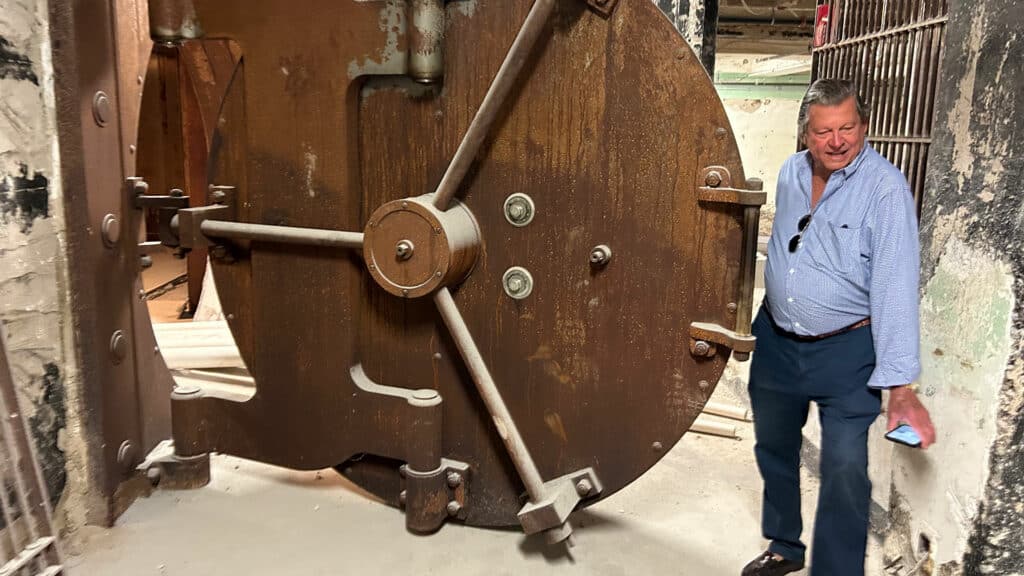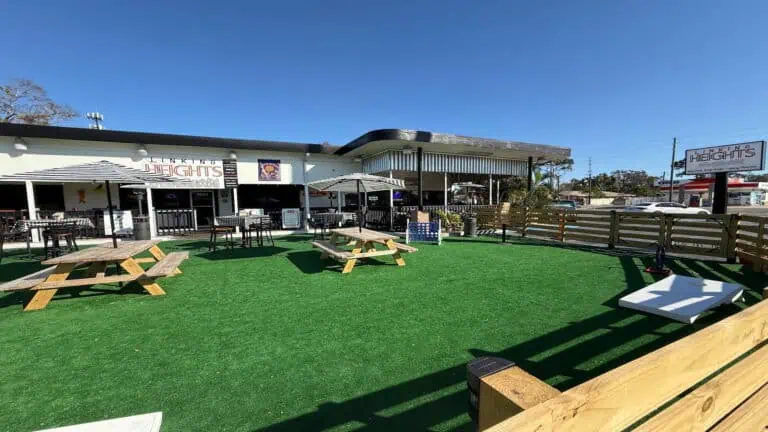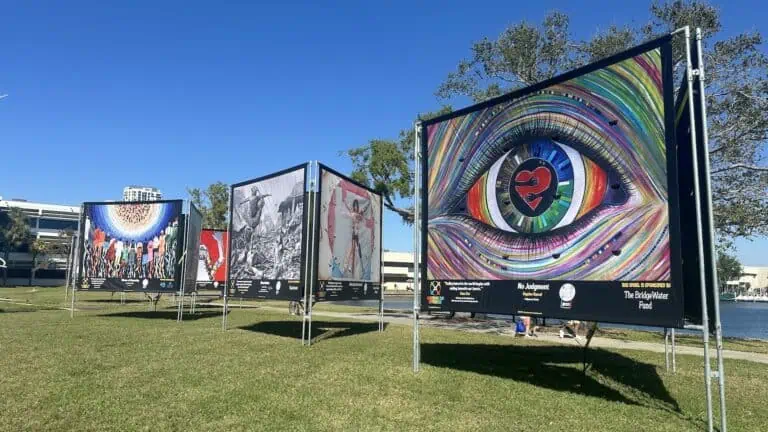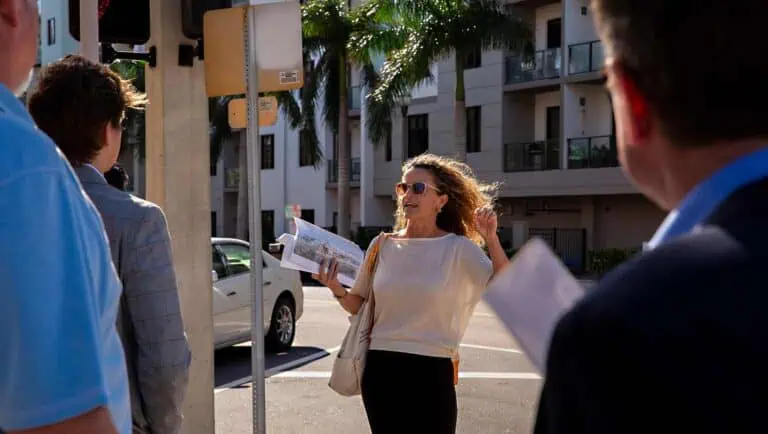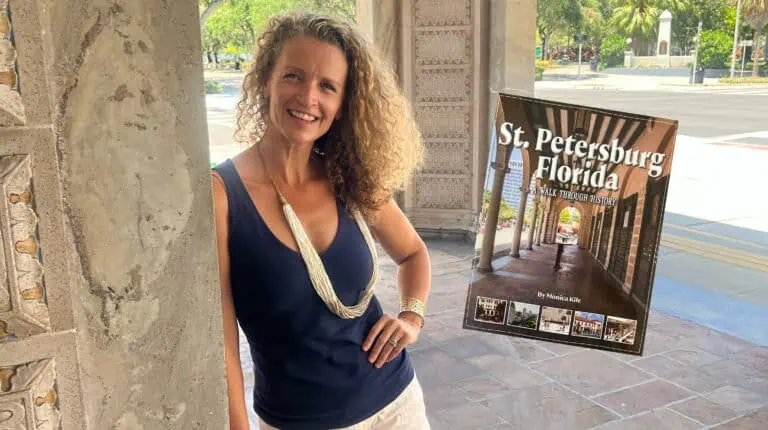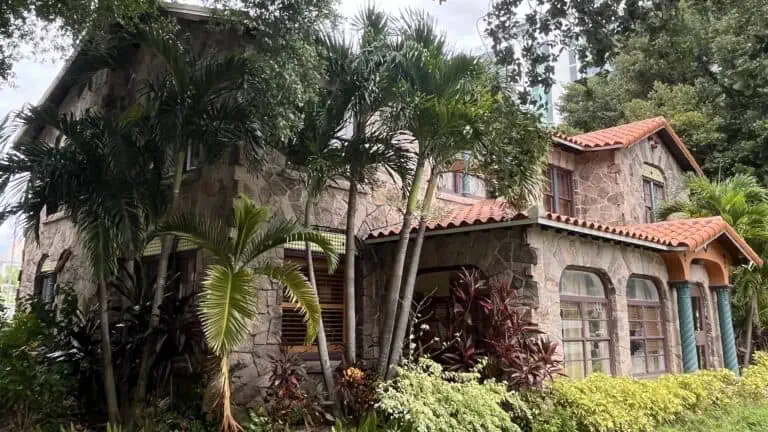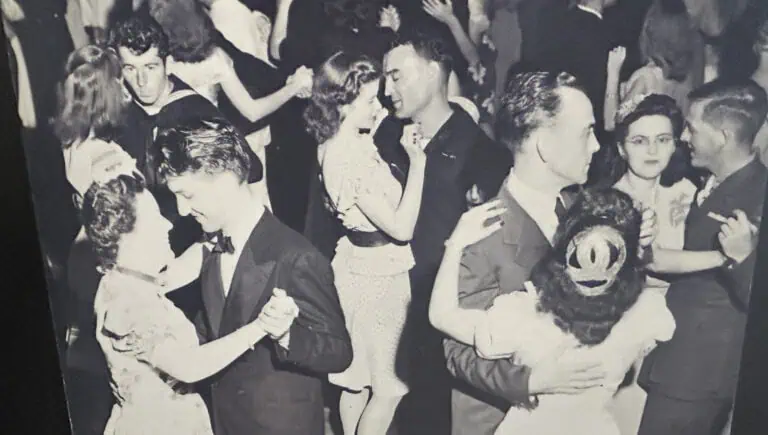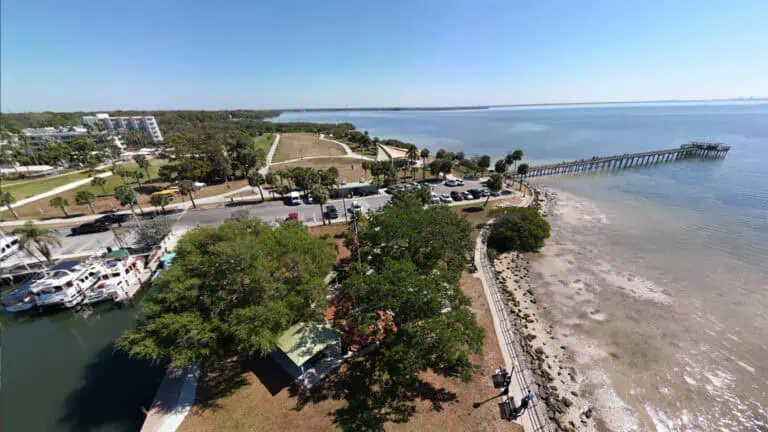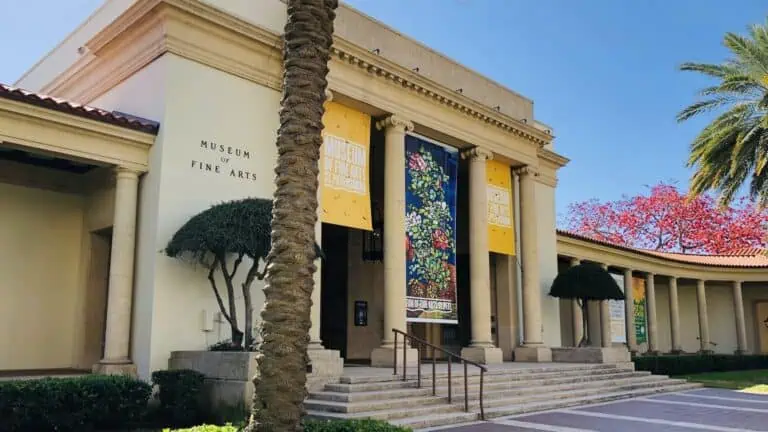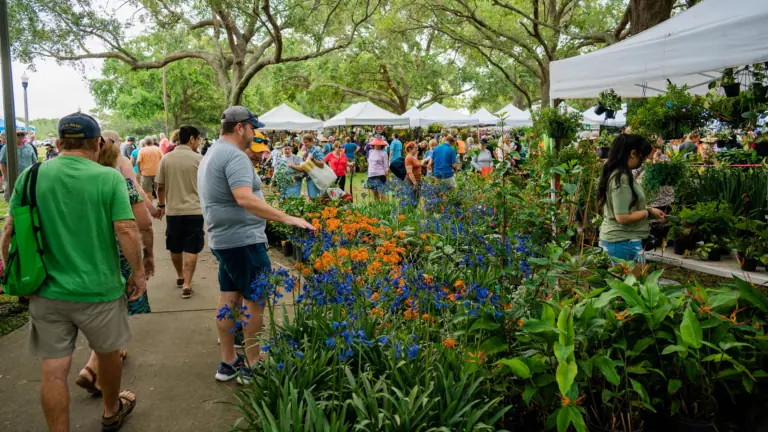If you’re interested in learning more about St. Pete from local historian Monica Kile, consider joining one of I Love the Burg’s walking history tours.
For those of us that love old buildings in St. Pete, there are a handful of places that we all long to go inside. In the 20 years I’ve lived here, I’ve been lucky enough to tick many of them off my list: the old YMCA, the top of the Snell Arcade, the tower of the Williams House on the USF St. Pete campus, and a few that have been demolished, like the old Garden Cafeteria.
Last week, I may have grabbed the brass ring. I had the pleasure of touring the inside of the historic Union Trust Bank with the man who played a large role in saving the building from its most recent brush with death, John Stadler.
ADVERTISEMENT
Stadler’s list of accomplishments in real estate is long and impressive: CEO of Stadler Associates, the largest independently owned real estate firm in Florida with 850 realtors; developer of the Hyatt Regency in Coral Gables, as well as the Del Monte and IBM Headquarter buildings in Miami; owner of the third largest marina company in the country.
But what I applaud him for is his determination to preserve the most historic portion of the Union Trust Bank building after he purchased it in 2016.
The 1926 building, originally built as Ninth Street Bank and Trust, was designed by Tampa’s M. Leo Elliot, the same architect responsible for the striking Cuban Club in Ybor City. The bank failed in 1927, but quickly re-organized with the First National Bank of St. Pete, rebranding itself as the Union Trust Bank. The first financial institution in the city to re-emerge from the crash, it forever after billed itself as the only bank to weather the Depression. It grew to be the largest state-chartered bank in Florida and one of the most important institutions in Pinellas County.
Over the years it was assumed by Landmark Bank, Citizens and Southern, and finally NationsBank. When NationsBank relocated in 1996, the building was shuttered and then slated for demolition the following year. A salvage seller even visited the building in 1997 and sold off various architectural details, including a marble staircase.
Public outcry after the demolition plans were revealed in the St. Petersburg Times caused NationsBank to pause the effort. The local historic preservation advocacy organization, St. Petersburg Preservation Inc. (now called Preserve the ‘Burg) quickly submitted an application for local landmark designation, which was approved by City Council in May 1998.
Because the building was a designated local landmark when Stadler bought it in 2016, he needed to go through the city’s Certificate of Appropriateness process in order to make major exterior changes. Because of the sheer size of the building (which later additions and renovations had expanded to occupy almost the entire city block) and the fact that the building had sat empty for twenty years, preservationists feared that the city might actually grant approval for demolition of the local landmark.
I asked John Stadler if he was ever tempted to knock it all down. His response was immediate: “I never even considered it. Not once.”
Maybe it’s the fact that his father was one of the founders of the First Federal Savings and Loan in Miami in 1934, and so he had a fondness for bank buildings. He tells me that it was the building’s beautiful architecture, solid construction, and the uniqueness of the massive vaults on two different floors. He’s also a shrewd businessman. “Listen, you can’t be successful in development unless the demand is there. And what are people attracted to? The unusual.”
The bank building is definitely unusual, and Stadlter could foresee a new use for the historic space.
He has also developed a deep appreciation for the culture of St. Petersburg. Having visited in the 1960s, he remembered it as a sleepy, quiet town. He returned in recent years to visit his son, who had relocated here, and found a different city.
“I quickly recognized that this was one of the most attractive, developing areas of Florida,” he said. “In St. Pete there’s a real focus on the local. To be candid, I didn’t fully appreciate that when I first started coming here. I was coming from South Florida and it’s very impersonal down there. Here, I walk into a restaurant like Uptown Eats and I know Dan, the owner. And they know my order.”
That growing appreciation for the local influenced his feelings about the 800 block of Central Avenue. After gaining city approval to demolish everything on the block outside of the historic 1926 bank building, he began seeking a development partner that would create something in keeping with the character of the historic bank.
“I talked to a lot of developers who wanted to be active in St. Pete, and they all wanted to do the same thing: mid-rise stick frame construction,” he said. “I thought the site deserved more than that. So I took the site to The Related Group, and we did a joint venture. They understood that this was a strong market, but they also took the time to understand the local market. They took the time to bring in an architect who would be sensitive to the Union Trust building. Really, that building dictated what would happen on that entire block. We went with a higher-rise building and quality construction. And we were pleased with the reception and success of the project.”
The Icon apartment building is now owned by the Camden company, who own and manage apartment complexes throughout the country. The historic bank building on the corner is separately owned and managed by Tricera Capital, which is leasing the first floors and basement to a proposed restaurant. The third floor remains available for lease.
When I toured the 1926 portion of the building with John Stadler one recent afternoon, the stunning architectural details took my breath away. The large arched windows with carved designs, the decorative column caps, and the heavy doors of the safe on the main floor are all features that can’t be replicated in new construction.
The piece-de-resistance is the large vault in the basement, with a round door that is several feet thick, that leads into a room full of safe-deposit boxes with their doors swinging open. My mind reeled with the thought of the jewels, deeds, and other valuable items that were stored here in the bank’s 70 years of operation. I was reminded of how lucky the community is that this building remains standing.
So what’s next for John Stadler?
The revolutionary Trails Crossing linear park for one, and the Trail’s Edge apartment complex for another. Both projects seek to activate what Stadler considers the undervalued asset of the Pinellas Trail.
Trails Crossing is a “linear cultural park”, comprised of four blocks of underutilized surface parking underneath I-275 around 16th Street, between First Avenue North and Third Avenue South. It is proposed as a public-private partnership that will activate a desolate area under the interstate and create a public park with access to the Pinellas Trail, which will be designed and programmed with walking and bicycle paths, lit art walls, a childrens’ area, container buildings, a beer garden, dog park, sculptures, a green amphitheater and more.
Baker Barrios Architecture created a conceptual plan to start the process and has interfaced with community stakeholders as well as the City to bring the park to fruition.
Trail’s Edge is a 23-story building featuring 204 apartments and 6,000 square feet of retail space, slated to begin construction soon. It will include 300 parking spaces in a five-level garage. Most notably, it also includes 6,000 square feet of retail space that will front the Pinellas Trail.
Directly across the Pinellas Trail to the south, another apartment complex is already rising on land that Stadler once owned. Before selling it to Mill Creek Development he required that they also agree to include several thousand feet of retail space fronting the Pinellas Trail.
John Stadler has an eye for both the unique and the under-valued, a quality that has served him well in his long career. He is now officially a resident of St. Petersburg, having fallen so in love with the city that he moved here five years ago. He has recently started Stadler Development and already has several projects underway.
Do I expect that he will save every old building in town because of its unique charm? No, I don’t. He’s a developer and I’m a realist. But the reality is that St. Petersburg is a white-hot real estate market and development is going to continue. Let us hope more developers recognize the economic value of our historic buildings like John Stadler did with the Union Trust Bank building. It is place-making at its best and I applaud success when I see it.
What to read next:
- St. Pete history: A tale of two buildings – the YMCA
- St. Pete history: Art House rises where the last train departed
- The Don Cesar celebrates 95 years of incredible beachfront history
- History Half Hour – a Master Class all about the Sunshine City
ADVERTISEMENT




